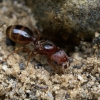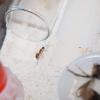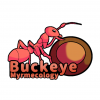Hello all, and welcome to my D. plagiatus journal.
I've been putting off starting this journal for a while now, for several reasons. Firstly, I didn't think any of the queens I collected would actually end up laying and producing fertile brood. For all I know, I'm the first one to attempt founding these guys with any success. There are 4 species of Dolichoderus native to Massachusetts. Mariae, taschenbergi, pustulatus, and of course, plagiatus. They are all understudied in terms of their founding tendencies. Mariae & taschenbergi are thought to be temporary parasites, although that is not 100% confirmed to be the case. Any information here is subject to change as we learn more about them in the future. In terms of plagiatus in particular, we know next to nothing. I was advised to collect workers to boost the queens with and see where it went from there. We didn't know if they were polygynous or monogynous, fully or semi claustral, or even capable of founding alone. So I was a little apprehensive about the whole thing.
Collection Notes | June 26th 2021 | Cape Cod, Massachusetts
Relatively cool day, low 70's with sparse cloud cover. I was biking through a mixed forest with a dense scrub oak layer that went to about chest height. Queens were out and about foraging on these scrub oak leaves. They were actually extremely agile and hard to collect, and they had an EXTREMELY annoying habit of just literally jumping off whatever leaf they were on, and directly into the leaf litter whenever any potential "predator" got near them, ei., my collection vial. I was able to collect 4 in the end, but I may have seen upwards of a dozen.
https://imgur.com/a/ozjbXU5
After collection, I tried a different method of founding with all the queens. I combined two queens to found together, and gave them a worker boost. Another one was given a worker boost, but would be founding solo. The last queen was to be treated as a solo semi claustral, with no worker boost. Boosting with pupae rather than workers would be preferable, but their nests are extremely inconspicuous and difficult to find. Fortunately, foraging workers were abundant.
https://imgur.com/a/OV27eaj
After a day, all the queens who had workers introduced to them were being bullied by the workers, and I promptly removed them. Additionally, the duo was not cooperating whatsoever, and they were separated. They later died presumably to the initial injuries suffered from the boosted workers. That left us with one queen left, the semi-claustral attempt. To my disbelief, she actually laid after a week or so and appeared to be caring for the eggs.
Unfortunately, this was the end of my success, as she would then continuously eat her brood until diapause. The furthest she ever got was a pre-pupae, which was towards the end of 2021. Thankfully this pre-pupae appeared to be of a worker so she is supposedly fertile. I put her through diapause and she currently has a nice little batch of eggs. Fingers crossed she is able to pull through this time and get some worker force going. I think after she gets her first nanitics they should be pretty easygoing, but the getting over the initial hump is going to be difficult. Any tips or suggestions are welcome, thanks for reading if you made it all the way here ![]()
New pictures will follow in a month or so if her brood is progressing. Stay tuned



















